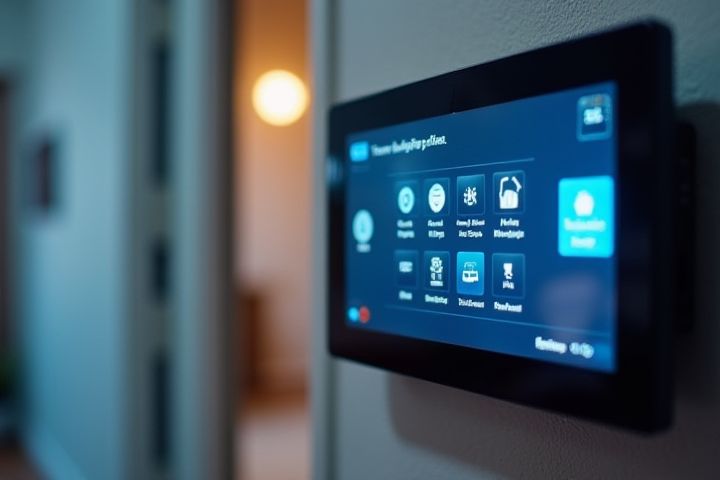
Investing in a smart house system can enhance your home's energy efficiency and convenience, making daily tasks easier. These systems can integrate smart lighting, thermostats, and security features, allowing you to control them with a smartphone app or voice command. By automating routine functions, you can reduce energy costs and increase home security, which can be appealing for potential buyers if you decide to sell in the future. Many smart home devices are compatible with popular ecosystems like Amazon Alexa or Google Assistant, providing seamless integration. Your initial investment could improve not only your living experience but also your home's market value.
Should You Invest In A Smart House System
Initial Cost
Investing in a smart home system typically involves an initial cost ranging from $1,500 to $10,000, depending on the complexity and the number of devices integrated. You can save on energy bills by up to 30% through efficient smart thermostats and lighting, which may offset some of the upfront expenses over time. Additionally, many smart home devices offer features such as security monitoring and automation that enhance your property's value, making it a potentially worthwhile investment. Consider the long-term benefits and potential savings when evaluating the initial investment in smart home technology.
Energy Efficiency
Investing in a smart home system focused on energy efficiency can significantly reduce your utility bills while minimizing your carbon footprint. These systems utilize advanced technologies such as smart thermostats, energy-efficient appliances, and automated lighting controls to optimize energy consumption. By integrating renewable energy sources like solar panels, you can further enhance the sustainability of your home. Monitoring your energy usage through mobile applications allows you to make informed decisions that contribute to both cost savings and environmental benefits.
Compatibility
Investing in a smart house system requires careful consideration of compatibility with your existing devices and technology. Smart home systems, such as Amazon Alexa, Google Home, or Apple HomeKit, vary in their ability to connect with various smart appliances, lighting, and security systems. Ensure that the devices you plan to integrate--such as smart thermostats, cameras, or lighting--are compatible with your selected platform for seamless operation. A well-suited system enhances convenience and efficiency, creating a cohesive smart living environment tailored to your lifestyle.
Privacy and Security
Investing in a smart home system enhances your home's privacy and security through advanced technologies such as encryption, biometric access, and real-time monitoring. Key features include smart locks that provide remote entry control, surveillance cameras with motion detection, and alarm systems that notify you of unusual activity. These tools integrate seamlessly with your smartphone, allowing for unparalleled access and control over your home's security. Furthermore, selecting devices from reputable brands ensures that your data remains protected against unauthorized access and cyber threats.
Resale Value
Investing in a smart house system significantly enhances your home's resale value by appealing to tech-savvy buyers. Features like smart thermostats, security systems, and automated lighting can reduce energy costs and improve convenience, making your property more attractive in a competitive market. Studies indicate that homes with integrated smart technology sell faster and at higher prices, as buyers increasingly seek modern amenities. By choosing reliable, well-known brands for your smart home devices, you can optimize your investment, ensuring it aligns with trends in home automation that buyers desire.
Installation Process
Investing in a smart house system involves a streamlined installation process that typically spans 1 to 3 days, depending on the complexity of your home and the specific system chosen. Most smart home devices, such as thermostats, security cameras, and lighting systems, can be installed with minimal tools, often requiring just a screwdriver and a smartphone for setup. Engage professional installers if your system involves intricate wiring or integration with existing infrastructure, which can enhance efficiency and ensure safety. Evaluating your home's layout and existing electrical systems beforehand can save time, reduce costs, and lead to a more effective installation.
Smart Device Integration
Investing in a smart house system significantly enhances your home with seamless smart device integration, allowing you to control lighting, heating, and security through a single platform. Over 70% of homeowners report increased energy efficiency due to smart technology, which can reduce utility bills by as much as 15-30%. By 2025, the global smart home market is expected to reach $174 billion, reflecting a growing trend towards automation and connectivity. Embracing smart device integration not only elevates your home's convenience but also adds to its resale value, making it a wise investment choice.
Maintenance Requirements
Investing in a smart home system can significantly reduce maintenance requirements. Many smart devices, such as smart thermostats and smart lights, streamline energy usage, leading to lower utility bills and prolonged equipment lifespan. Regular software updates enhance security and functionality, minimizing the need for extensive repairs. By choosing a reliable system with user-friendly interfaces, you can ensure that your home's maintenance is efficient, saving you time and effort in the long run.
Connectivity Requirements
Investing in a smart house system requires careful consideration of your connectivity requirements, as reliable Wi-Fi is crucial for seamless operation. A minimum internet speed of 25 Mbps is recommended to support multiple smart devices without lag. Aim for a robust router with at least dual-band capabilities to manage various devices efficiently across your home. With approximately 70% of households embracing smart technologies by 2023, ensuring your connectivity can support these advancements will enhance your smart home experience significantly.
User Experience
Investing in a smart house system significantly enhances User Experience by integrating seamless automation, improved energy efficiency, and increased security features. Smart devices, such as thermostats, lighting systems, and security cameras, can lead to a 20-30% reduction in energy costs, providing substantial long-term savings. With the ability to control these systems remotely via smartphones, you enjoy unparalleled convenience and personalized settings tailored to your lifestyle. Moreover, adopting smart technology can increase your home's market value by up to 5%, making it a prudent investment for future resale.
